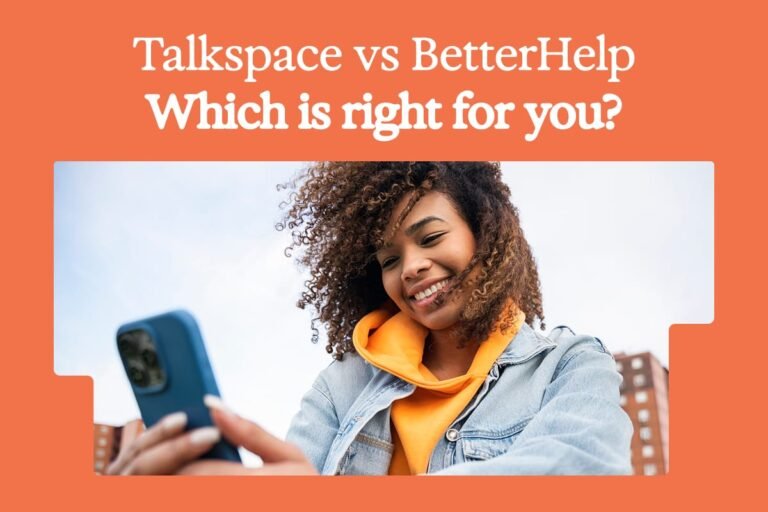These days, our phones do everything from unlocking the front door to adjusting the thermostat. They wake us up, start our cars, and even track our steps. With so much convenience packed into a single device, it’s no surprise we reach for it constantly.
Unfortunately, though, nonstop connection to technology can contribute to mental fog, emotional fatigue, sleep issues, and reduced attention span. That’s where a digital detox or a “phone cleanse” can help. By taking a mindful break from your smartphone, you can restore clarity, reduce stress, and improve your mental well-being.
In this article, you’ll learn how to do a digital detox in realistic, sustainable ways. We’ll provide actionable steps for how to digital detox successfully, no matter how deeply you depend on your device.
Why a Digital Detox Is Important for Mental Health
Between news alerts, social media scrolls, and non-stop group chats, our minds are rarely at rest. While staying connected has its perks, it can also lead to information overload, leaving you feeling mentally cluttered and emotionally worn out. Add to that the fear of missing out on watching other people’s carefully curated feeds, and it’s easy to see how quickly emotional exhaustion can take hold.
If you’ve ever noticed that too much screen time leaves you feeling anxious, moody, or just plain tired, you’re not imagining these effects. A recent study found that adults with higher screen time reported more anxiety and depression symptoms. When it comes to sleep, scientists believe the blue light from the screen on your digital devices may also interfere with melatonin, the hormone that tells your body it’s time to sleep.
“In my practice, I noticed that clients depend on their phones for everything, and that makes it hard for them to relax or be present in real life.”
Signs You Might Need a Digital Detox
Many people don’t realize how deeply their devices are affecting their well-being until they start noticing small but persistent shifts in how they feel. Maybe you’ve fallen into the habit of opening your phone before you even get out of bed, or you’ve “just checked Instagram” and suddenly an hour has slipped away. If any of the scenarios below sound familiar, it might be time to explore the benefits of a technology cleanse.
Feeling anxious or irritable without your phone
If the thought of misplacing your phone makes your heart race or if you feel unsettled when it’s not nearby, it could be a sign of emotional dependency. Constant notifications and the need to stay connected at all times can keep your nervous system on high alert.
Difficulty focusing or completing tasks
Maybe you sit down to answer an email and end up bouncing between five apps, forgetting why you picked up your phone in the first place. Smartphones are designed to capture attention, but frequent interruptions can slowly chip away at focus. If your productivity feels like it’s lagging, your technology might be the culprit.
Disrupted sleep patterns
Late-night scrolling might feel like a harmless way to unwind after a long day at work or running errands, but it can actually sabotage your rest. Ever found yourself wide awake after “just one more” TikTok or YouTube video? Screens emit blue light that messes with melatonin, making it harder to fall and stay asleep.
Comparing yourself negatively on social media
How To Prepare for a Successful Digital Detox
The key to a digital detox or phone cleanse is to prepare ahead of time in a way that supports your goals and lifestyle. Think of it like planning a short trip: You want to know where you’re going, what to pack, and how to navigate the journey. These simple digital detox tips can help you get started.
Setting clear intentions and goals
Before you make any drastic changes, get specific about your “why.” Are you hoping to improve your sleep? Feel less anxious? Be more present with family and friends? Knowing your motivation makes it easier to stick with your detox, especially when old habits creep in.
Then, come up with a timeframe and goal that feels realistic for you. You don’t need to go offline for weeks. A weekend break or limiting phone use after 8 p.m. can be a meaningful change.
Informing others and setting expectations
If you’re usually quick to respond to texts or active in group chats, let your circle know you’re taking a step back. This can be as simple as sending a quick text or setting an away message. Let coworkers or loved ones know when and how to reach you in case of emergencies.
Choosing your detox boundaries
Your phone cleanse can be as flexible or structured as you need it to be. You might delete social media apps, turn your phone off during meals, or limit screen time to certain hours of the day. Maybe you commit to not using your smartphone in bed or leave it in another room during your morning routine.
Practical Tips for Reducing Phone Use
Reducing technology use shouldn’t feel like a major life change. These simple strategies can help you ease into healthier habits without feeling deprived or disconnected.
Disable non-essential notifications
Start by turning off alerts from apps that don’t need your immediate attention. Fewer pings mean fewer interruptions and fewer urges to check your phone. Most people find that after a day or two, they don’t miss the constant buzzing.
Use apps that track and limit screen time
Ironically, your phone can actually help you cut back on screen time. Tools like Screen Time (iPhone) or Digital Wellbeing (Android) can show you exactly where your time is going, and how much of it is spent on your device. Once you know your patterns, you can set app limits or schedule downtime for specific hours.
Create phone-free zones and times
If you can’t commit to a complete phone detox, designate certain spaces or parts of your day as tech-free. Maybe you keep your phone out of the bedroom or commit to screen-free meals. Setting boundaries with your tech can help you be more present in small, everyday moments while reducing mindless scrolling.
Replace screen time with intentional activities
When you cut back on screen time, you make room for more meaningful experiences in your life. Try swapping out your evening scroll for a midday stroll, a new self-care routine, or a tech-free evening with a friend. Even small adjustments can help erode old habits and pave the way for new ones.
“Small changes in how we use our phones can really help us feel better and sleep better. Turning off extra notifications can make it easier to focus and feel less stressed. Putting our phones away before bed helps our brains relax and makes it easier to fall asleep. Taking breaks from screens during meals or walks can also boost our mood and help us enjoy the moment more.”
Resisting the Urge During a Digital Detox
Even with the best intentions, it’s normal to feel drawn back to your phone during a digital detox. If you’re struggling with the urge to resist your phone, consider these strategies to help you move through those moments with more ease and compassion.
Managing discomfort and urges
If you notice the reflex to check your device every time there’s a pause, like while waiting in line or during commercial breaks, that’s normal. When it happens, try grounding yourself in the moment. Take a few deep breaths or reach for a comforting object like a cup of tea or a magazine. Research shows that even short mindfulness exercises, when practiced consistently, can help people stay motivated and follow through on their goals.
Dealing with boredom or anxiety
Many of us rely on our phones to fill the gaps in our day, from study breaks to waiting rooms, so without them, boredom or even anxiety might creep in. It may help to have a short list of offline activities ready, like journaling, coloring, playing with a pet, or doing a puzzle. Choosing something simple and tactile can soothe your nervous system and reduce the impulse to reach for your phone.
Being kind to yourself if you slip
Slipping is a natural part of the process, not a failure. If you find yourself falling back into old habits, like mindlessly app-switching or picking up your phone first thing in the morning, take a moment to notice how you feel, then gently return to your intention. Progress — not perfection — is what matters.
“When you’re trying to use your phone less, it’s important to be patient with yourself. Change doesn’t happen right away, and it’s okay to mess up sometimes. Instead of becoming frustrated, remember progress takes time. Setting small, realistic goals like slowly cutting back instead of stopping all at once, can help you stay on track without feeling stressed. Being kind to yourself makes it easier to keep going, even if it’s not perfect.”
Building a Healthier Relationship With Your Phone
A phone cleanse is more than a break; it’s an opportunity to reset your habits long-term. After your detox, reflect on what worked and what felt good. Maybe that means continuing to keep your phone out of the bedroom or setting regular screen-free hours. Mindful scrolling, tech-free weekends, and using your phone with intention are simple ways to stay grounded.
Whether you’re looking to build basic skills to gently de-center technology from your daily routine or facing a more serious technology addiction, taking intentional steps toward balance can help you regain control. If you feel overwhelmed by digital demands or struggle to unplug, you’re not alone. Help is available, and you can find support to manage a phone addiction or establish healthier habits with technology use.
Talkspace can connect you with online therapists who understand the mental toll of digital overload. Talkspace can help you create a healthier, more intentional relationship with technology while supporting your broader emotional wellness. Contact someone today for help.










